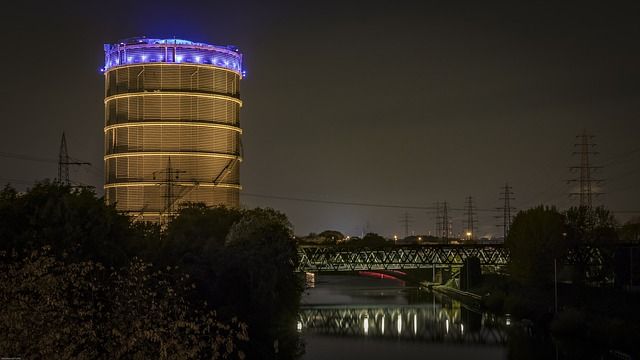These things usually don’t happen in mid-March. Gas storage facilities in Poland, instead of being empty, because winter is already ending, are filling up intensively. Among other things, thanks to the inflow from the Yamal gas pipeline.
Poland is not bothered by high prices in a situation where gas may run out. Poland is prepared for the crisis and can even provide Ukraine with gas, but something else is visible in Europe. Many countries have not built and are not building stocks. Few are prepared for the possible lack of gas imports from Russia.
Germany and France may be afraid of cutting off gas supplies from Russia. The warehouses are only 25 and 19.2 percent full, respectively. – it follows from the data of the institution called the Aggregated Inventory of Gas Storage Facilities.
Poland has 61% and 22 TWh of gas
For comparison, Poland has 61 percent. and 22 TWh (terawatt hours) of gas collected, compared to 14.9 TWh a year ago. Poland has stocks, as you can see, almost half as much as in 2021.
They should be enough for about 10 percent. annual consumption (212 TWh in 2020), i.e. due to the waning winter, it will be gas for perhaps even two months without external supplies, and after all, supplies, even via Świnoujście, still come by sea.
Monitoring the level of filling the tanks shows that, for example, France has little more gas than Poland, and in the energy sector it needs much more than we do. It produces 10 percent of it. electricity, while Poland is slightly more than 5 percent.
As of Sunday, Germany had 61.5 TWh of stored gas, while a year ago it was 67.3 TWh. Gazprom’s Astor warehouses in Lower Saxony are almost empty. Michael Kruse, spokesman for the FDP, the party forming the ruling coalition in Germany, said last week that Gazprom should get rid of these storage facilities.
It cannot be that Russia is the largest gas supplier and at the same time has large storage facilities in Germany, there is an urgent need to unbundle,” said Kruse, welcoming the fact that the European Commission had clearly indicated that gas storage facilities must be immediately protected from Russian influence .
France has 24.6 TWh of inventories, which is almost the same as a year ago (24.7 TWh). Looking at these data, it is difficult to talk about the preparation of the above-mentioned countries to the crisis and the potential blocking of imports from Russia.
The situation looks rather normal, as if there were no war and no sanctions on gas were planned in the near future.
Austria and Netherlands are in a very difficult situation
The Netherlands is in a very difficult situation , with only 20 percent full. tanks, while almost half of its energy is based on gas . Currently, it has 28.8 TWh of gas in its tanks, and a year ago at the same time it was 37.3 TWh.
The lowest filling of warehouses, i.e. 13%, is in Austria , where the Russian Gazprom, like in Germany, is the main owner of Astor’s tanks.
A year ago, Austria had 30.3 TWh of gas in tanks, currently only 13.5 TWh, and as much as one third of gas is used for electricity production.
Completely unprepared for a possible crisis are also Belgium, Bulgaria and Croatia with less than 20 percent. fillings . However, there are countries that take potential gas shortages seriously and are prepared to impose sanctions on Russia.
Prepared for the crisis
The United Kingdom has already announced such sanctions in parallel with the USA , although for now only on oil, not on oil and gas, as the USA does.
However, it is prepared for the possible blockage of gas flow with tanks filled to 78.5 percent. Another thing is that these warehouses are much smaller than in Poland, and are connected by a network of gas pipelines with deposits in Norway. On 13 of March, it had accumulated reserves of 7.6 TWh, compared to 1.7 TWh a year ago.
Outside of Poland and Great Britain, over 60 percent. Portugal and Sweden still have gas storage facilities, and Spain has a high level of 58%. In the case of Sweden, however, its consumption is low, it does not use gas at all to produce electricity, so the mentioned high percentage is for small amounts.
The largest amounts of gas collected in Europe, counting in terawatt hours, are Italy and Germany – over 60 TWh each of these countries.
Together they store as much as 44 percent. EU stocks of natural gas . In both cases, however, inventories are significantly lower year on year. Italy has 66 TWh, which is 10 TWh less than a year ago, and Germany 61.5 TWh, which is 6 TWh less year on year.
Source: BusinessInsider

























